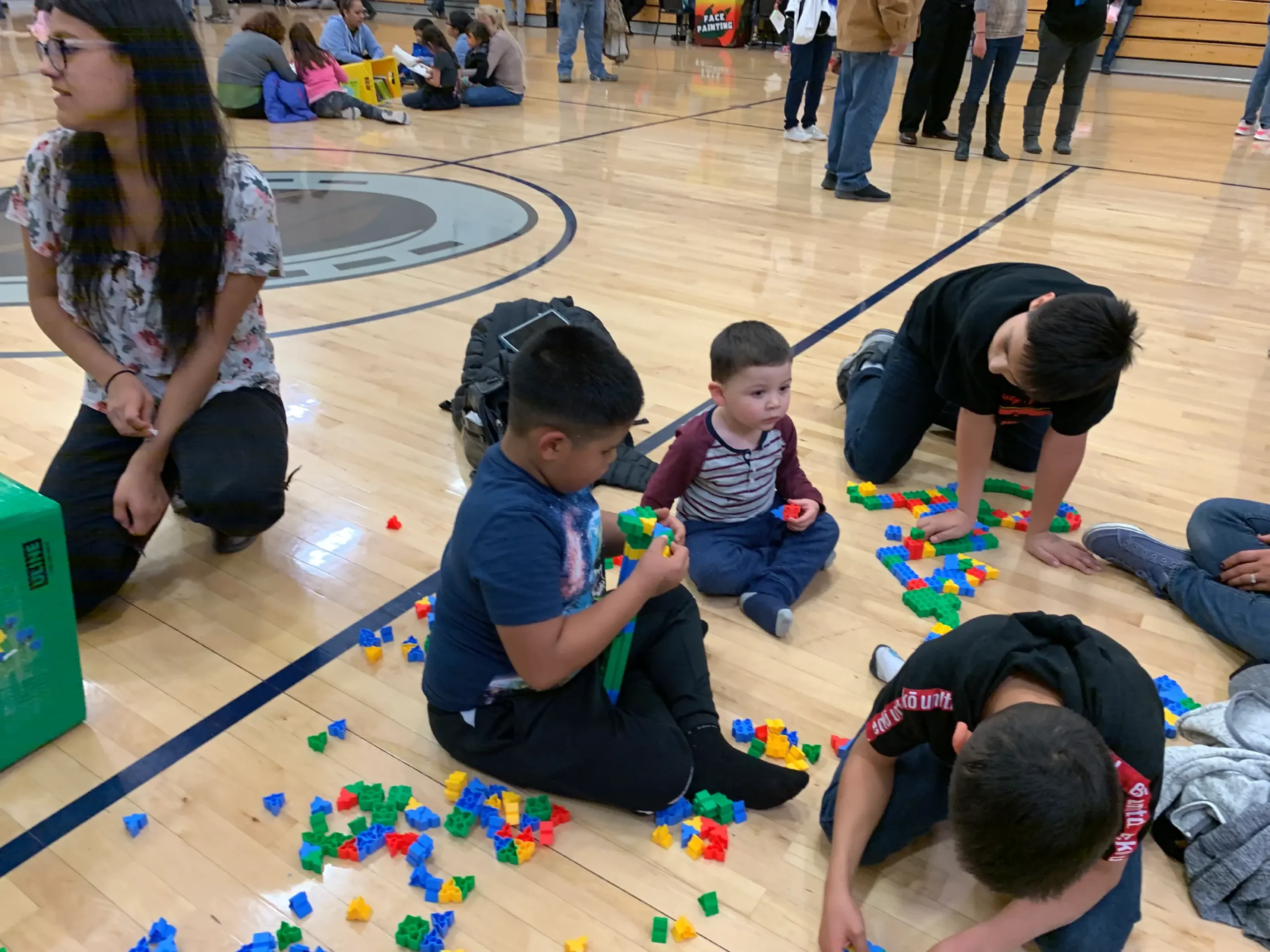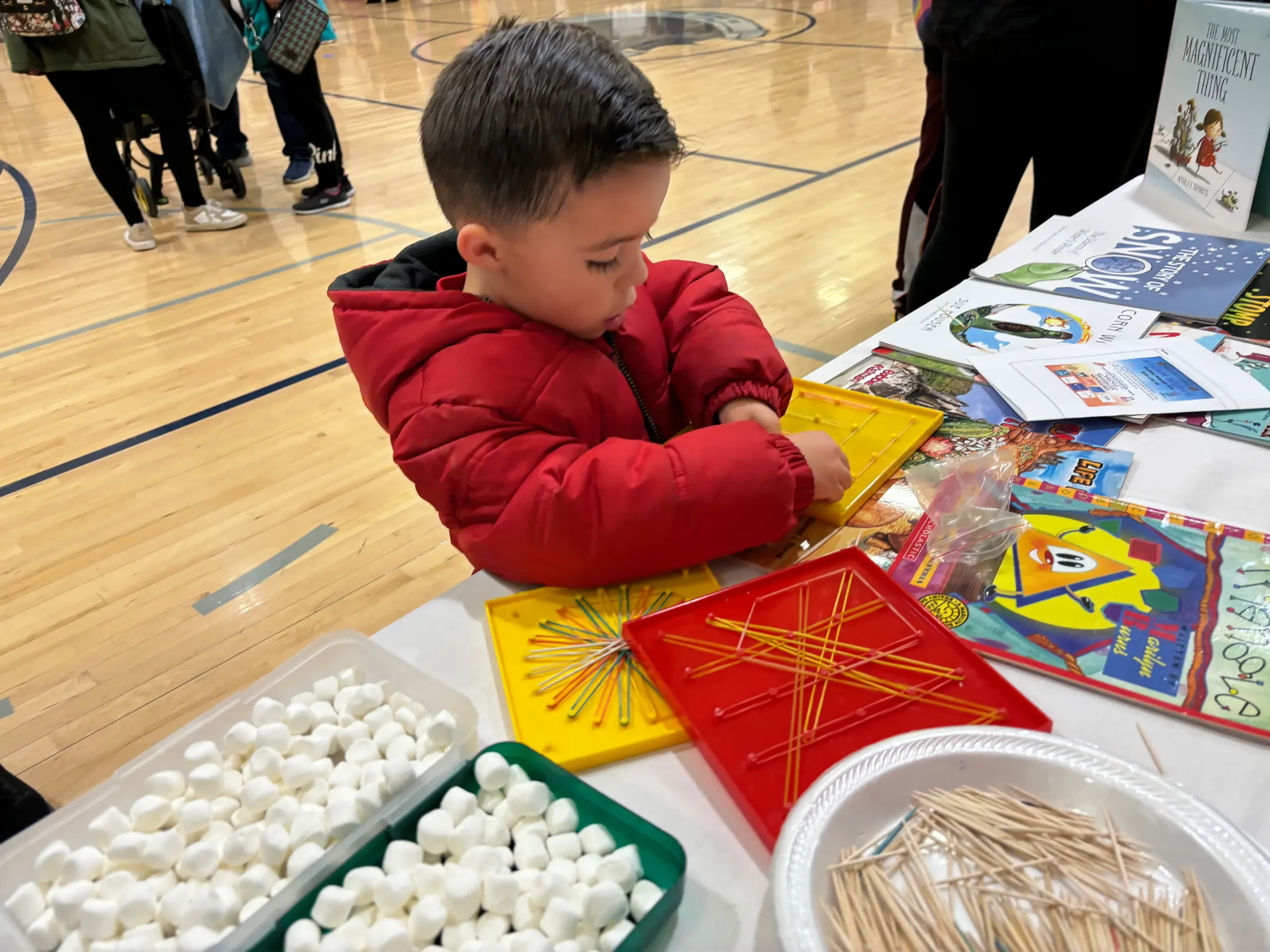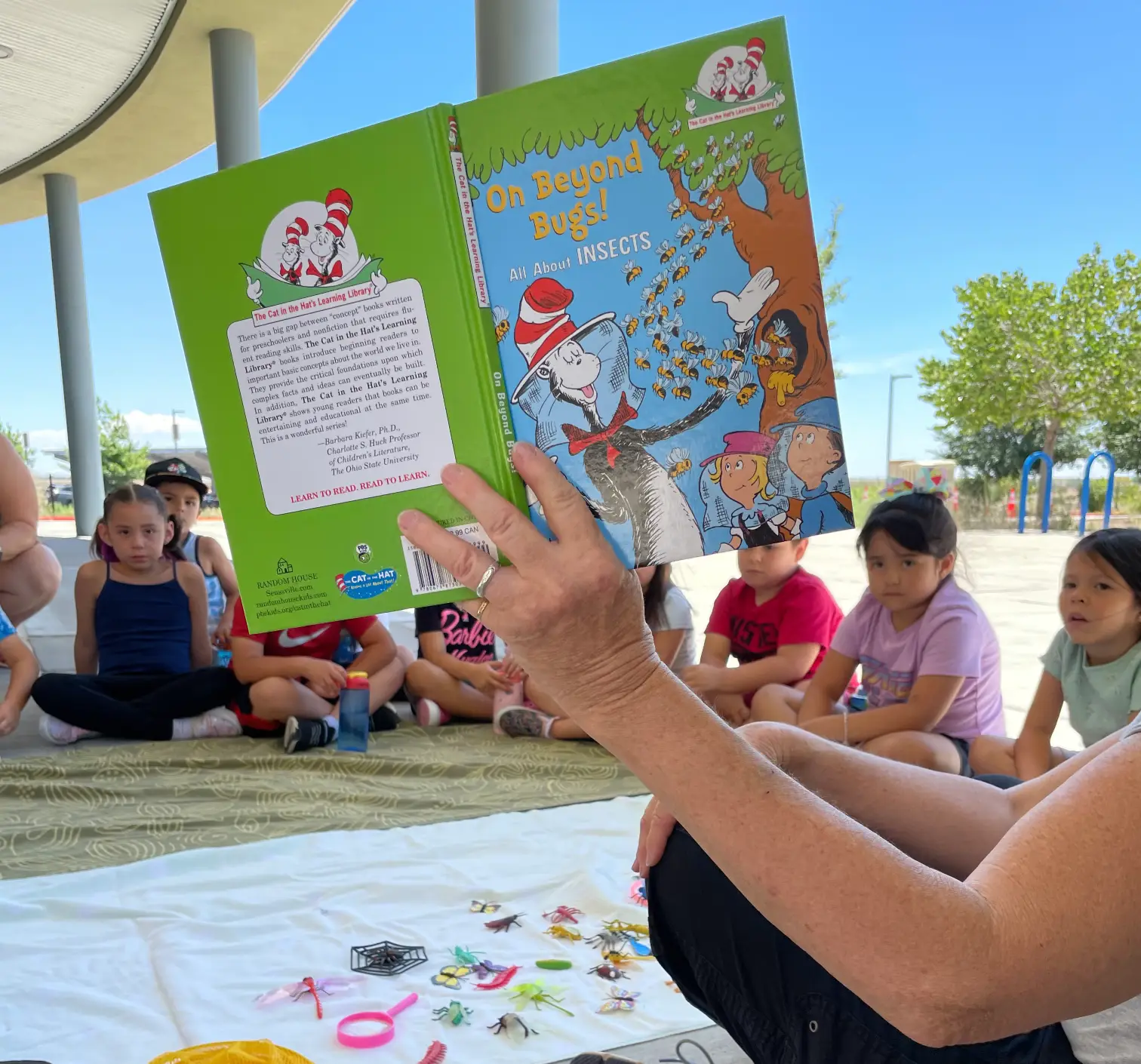Courtesy photo: Summer Program, going on a bug hunt.
Book Nook Feature
By Judy Reinhartz
With the end of the summer season and thoughts of cooler weather that the fall brings, we as parents and caregivers are filled with excitement and anticipation for new beginnings for our children. The start of a new school year also promises fresh learning possibilities for our young children.
Welcome and gather around for storytelling time focused on a theme of new beginnings that starts today with the Tumbleweeds Book Nook. The narrative unfolds with fresh and inspiring perspectives for “spying” early math in everyday surroundings, routines, and books.
This theme celebrates and stimulates infants’ and toddlers’ creativity, positive mindset, and self-esteem, all while having fun. The characters in this story find math in the most unlikely places, hidden all around them and their families—in gardens with its attractive geometric shapes, yards and parks with space for messy water math activities, at grocery stores where numbers are on display in every isle, when preparing meals where counting, comparing quantities, and measuring are front and center, in doing laundry sorting by sizes and shapes and making pairs, and when reading bedtime stories where children count their way to sweet dreams.
These opportunities enhance imaginative math play and contribute to the basic understanding of number sense and relationships as they group, sequence, make patterns that are accompanied by math talk when we use everyday words, such as: “Almost at the top or bottom,” “Down, down, down,” “two more,” “often,” “another step,” and “totally” to name “a few.” It turns out that there are multiple ways to make early math come alive. All we have to do is to embrace and intentionally take advantage of them with children.
Where does early math exposure start? Well, you know the answer. Families are our first teachers. This can’t be overstated when it comes to math. Young children’s formative learning experiences around math literacy, language, and attitudes are rooted in the family. The link between parent involvement and school readiness and success are well established and intricately linked. It is within families that children learn to build math confidence and positive math attitudes as they witness what is said and done when parents are confronted with new dilemmas and challenges. How they arrive at solutions does not go unnoticed by their children.
As infants gradually begin to move their bodies, roll over, crawl, walk short distances while holding an adult’s finger, or move from chair to chair, they are exploring their space while simultaneously learning math. To be specific: spatial relationships, understanding how objects relate to each, is a cornerstone of early math learning.

Courtesy photo: School STEM Family Night, children playing a game with snap blocks.
Let’s extend opportunities for our eager learners with books and other materials. A few of my favorite books that enhance the understanding of spatial relationships come complete with engaging heroes, settings, and plots. They include Elenor May’s Albert is Not Scared who is with His big sister at the amusement park with rides reminiscent of the best of summer, but he finds himself in the wrong line—find out what happens—Rosie’s Walk by Pat Hutchins, Up, Down, and Around by Katherine Ayres, and for the upcoming fall season, Piggies in the Pumpkin Patch by Mary Peterson and Jennifer Rofe.
Let’s build on the ideas presented with the Positional Box Word Game using favorite stuffed animals. When children are asked the question, “Where is the teddy bear?” Above, below, under, left, right of the box—you get the idea. They physically place the bear in that place relative to the box. This simple activity promotes positional and directional word learning in playful ways. This idea also can be enjoyed when reading the book Pete the Cat: The Wheels on the Bus by James Dean. And it can morph into Hide and Seek games of Where Is the Frog—on a lily pad, in the water, under the water, and children mimic the movement of frogs as they hop from one green paper lily pad to the next. Or even play hide and seek with Dean’s Pete the Cat Plays Hide-And-Seek or Baby Faces Peekaboo! by Dawn Sirett.
The concept of receiving one or two more or one or two less of something—comparing and measuring stuffed animals, dolls, cars, or blocks and paring them with books like Lia & Luis: Who Has More? by Ana Crespo, What Will Fit? by Grace Lin, and Crash! Boom! A Math Tale by Robie H. Harris will reinforce these relationships that are presented in different situations, broadening understanding.
Learning foundational math relationships would not be complete without counting by twos, fives, and tens when singing songs, sorting shapes, and eating individual pieces of cereal. Ten in a Hurry: An Interactive Colors and Counting Book by Lo Cole, Captain Numero and Friends: Skip-Counting By 2, 5 by Danielle Welton-Boxley, or Two of Everything by Lily Toy Hong are all good choices. And part-part-whole relationships are fostered when children build number trains with snap blocks and then take them apart or listen to Stuart Murphy’s Give Me Half, which explores the idea of more, less and between, how to figure out ages, and shares a game to compare numbers. With these common everyday situations, young children explore numbers, visualize them in different contexts, and develop flexibility outside the traditional algorithms.
In today’s story, caring and supportive adults interact with their children and ask engaging and thought-provoking questions; it is not our mission to get right answers from them, but to demonstrate that math is in their world. What do you see? What does this look like? Which one is your favorite and why? Adults often want to go to ask How many ___ do you have? because we think that is the way to teach-learn math.

Courtesy Photo: Book and geoboards, The Greedy Triangle
Intentionally weaving math into routine tasks such as organizing toys as part of clean up, predicting what comes first, reciting when dressing one arm two arms, attaching a number to steps when walking up and down them, finding the numbers of keys on a ring and matching the one that opens the door (one-to-one correspondence), lining up play dough worms, or singing nursery rhymes and songs such as “1, 2, buckle my shoe,” “Six little ducks went out one day,” or “Over in the meadow” affords countless ongoing conversations and engagement with and for children. What is truly amazing is that they share their (math) ideas and then act on them, even when they are making towers with blocks or filling different sized contains during bath time.
Whether listening to a book being read, playing with toys, or making crafts, infant and toddlers are doing math without you even mentioning the word. The joy of math starts early where children are. This joy is powered by the curiosity of their exploratory nature. Math is easy to discover because it is embedded all around us. Young children have an intuitive sense for numbers, but this predisposition has to be nourished so it continues to flourish, which is our job as parents and caretakers, their first teachers.
As our story comes to an end, the good news is that infants and toddlers already love math. Let’s remember to continue to uncover math in all the strange places. The goal is to give children opportunities that offer possibilities to make sense of what they encounter. So, notice and celebrate math wherever you find it. As Robert A. Heinlein has pointed out, “When one teaches, two learn.”
Judy Reinhartz is a professor emeritus at the University of Texas at El Paso, and a board member of the Santa Fe Alliance for Science and coordinator of its Adopt-A-School program. She’s also lead for MathAmigos and director of its literacy and math coaching program. Learn more at mathamigos.org.


